7 questions to ask before you upgrade your camera
7 questions to ask before you upgrade your camera
Face it, all of you have thought about investing in more gear. Everyone is gear acquisition mad, a lot of this is due to over hyped marketing. In this article we will discuss if and why you need to upgrade, by going through 7 questions.
What is gear acquisition syndrome (GAS)?
You hear both sides of this age long question, does gear matter? Some people say yes of course it does and others go on about no it is not important. In this section let us consider gear first.
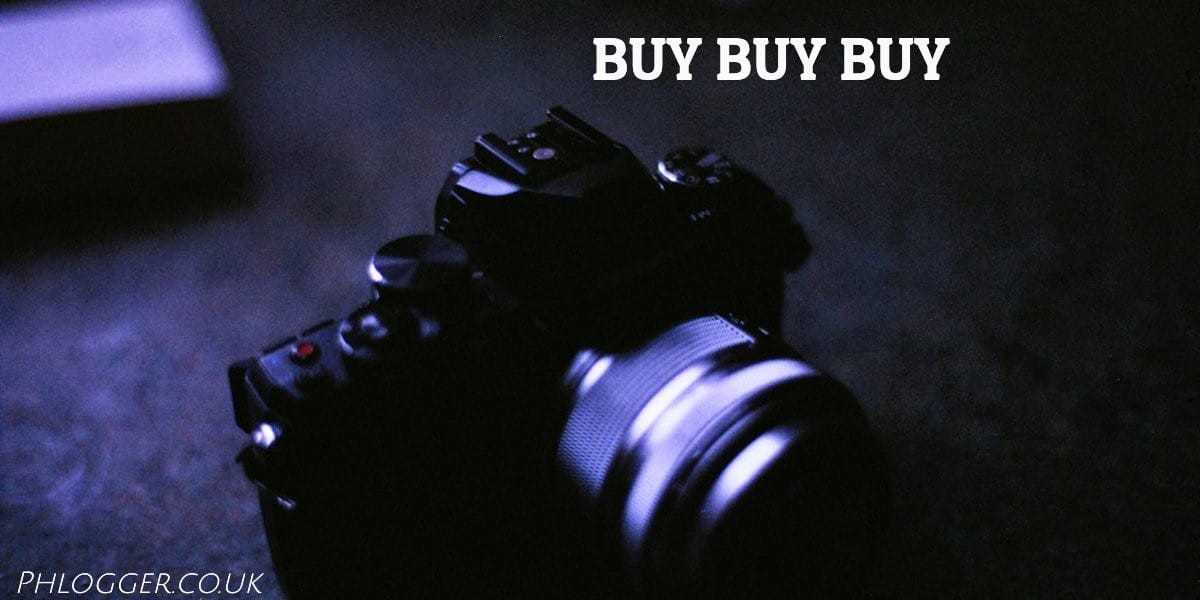
You are presented with quality photos no matter if you are on the web or looking through social media sites like Instagram or Facebook. Technology in cameras have now reached the point where anyone can capture a great image (you just need talent). You can do all this with modest equipment too. Spend a few minutes on Instagram and you will see amazing pictures.
When you start your way in photography it is easy to watch a video course or YouTube to try to improve. You learn from the masters, but look at their videos – they use high-end gear. Of course, there are exceptions, who discuss budget equipment.
A natural step is to buy more expensive equipment (commonly referred to as gear acquisition syndrome) to get that better shot. Most professionals use full frame cameras so surely you need to follow suit? I bet even those amateur friends of yours are using full frame too?
You will need to consider questions like these:
- is now the right time to spend more?
- when does the spending stop?
- will I need to keep upgrading?
- am I investing or buying?
Let us try to answer those questions.
1 – To buy or not to buy?
Think about where you are in your career or hobby. Then think about the type of photography you shoot or your client base. Do you actually know all the functions of your gear and can you produce good results?
Investing and buying equipment are not the same. If you are an amateur and not being paid for your work you are spending money. However, if you are a photographer with paid work then you COULD be investing. To emphasise this point, more expensive or new equipment does not necessarily increase your picture quality.
Each area of photography can use different equipment, like lenses or lighting for example. For instance, if you shoot extreme close up macro work then you can get by with cheap bellows or a reversing adaptor. But ultimately a macro lens is sensible (as is suitable light) to be consistent and provide quality.
Another element is the cost to replace or upgrade as you need to think of the “return on investment”. This is calculating how much you spend on the item and how you would recover this from paid work. So, if you bought a new £2000 lens, would you be able to sell more pictures to cover this spend? Would you be able to get more work, different work or more profitable work?
If you are a portraiture photographer and suddenly want to shoot weddings in dark churches, you need to invest in the right equipment. So investing in a camera that suits low light would bring you extra income to pay for this.
2 – What is the right equipment?
Knowing what equipment is right for the purpose is not always clear-cut, as a photographer you always have options. So let us look at a few scenarios and areas of photography
Portraiture
This type of photography opens up a whole plethora of choice with regards equipment. Whether it is studio work or outdoor with natural light, each type of lighting situations brings its own form of problems and solutions.
With a studio session, you should have the appropriate equipment (lights/umbrellas/softboxes) so the choice of camera and lens is more subjective. Improvement could be made to purchase stronger stands, more lighting and brighter/better quality bulbs. This would give you more flexibility and open up different possibilities for you.
It is not always plain sailing knowing the right equipment, especially as a beginner/amateur. During my very first portrait session, it was assumed the lighting setup would be suitable. The camera equipment selected were:
- an Olympus 35mm film camera,
- a Bronica medium format film camera
- an Olympus OM-D EM10 mirrorless DSLR.
In this session there was a massive difference in the quality of the images produced.
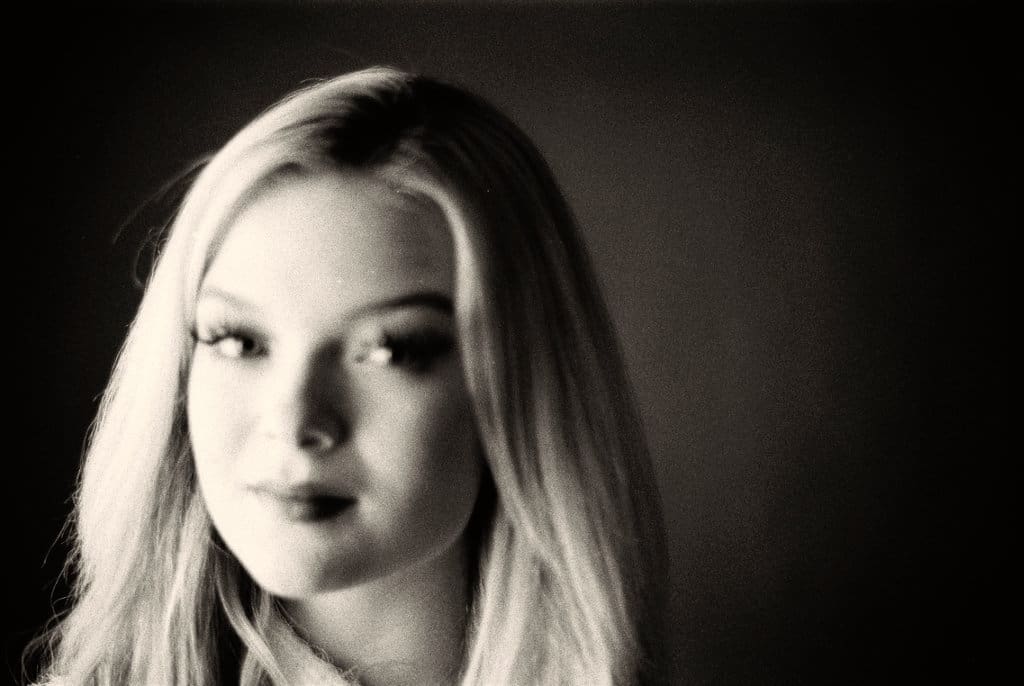
Look at the out of focus image above taken on the Olympus film camera. Even though the same setup was used for all photographers, the other photographers’ results were much better. Do you believe this was down to better equipment or the use of digital cameras by others?
Well you are 100% wrong, it was down to the photographer (me). Stupidly the camera was still set in aperture priority and it was very dark. Admission in your failings is important – see this blog article for more information.
Even when using a modern DSLR (Olympus EM10) the ISO was raised so high the pictures were not great. So this is an example where G.A.S. is irrelevant – it didn’t matter what camera was used (even shot wide open at f1.8).
This failure could have been prevented by using a tripod to slow the shutter speed down (the film was fixed at iso 400) or by using appropriate lighting. If you look at the below image you will see the result of using correct lighting with appropriate camera settings.
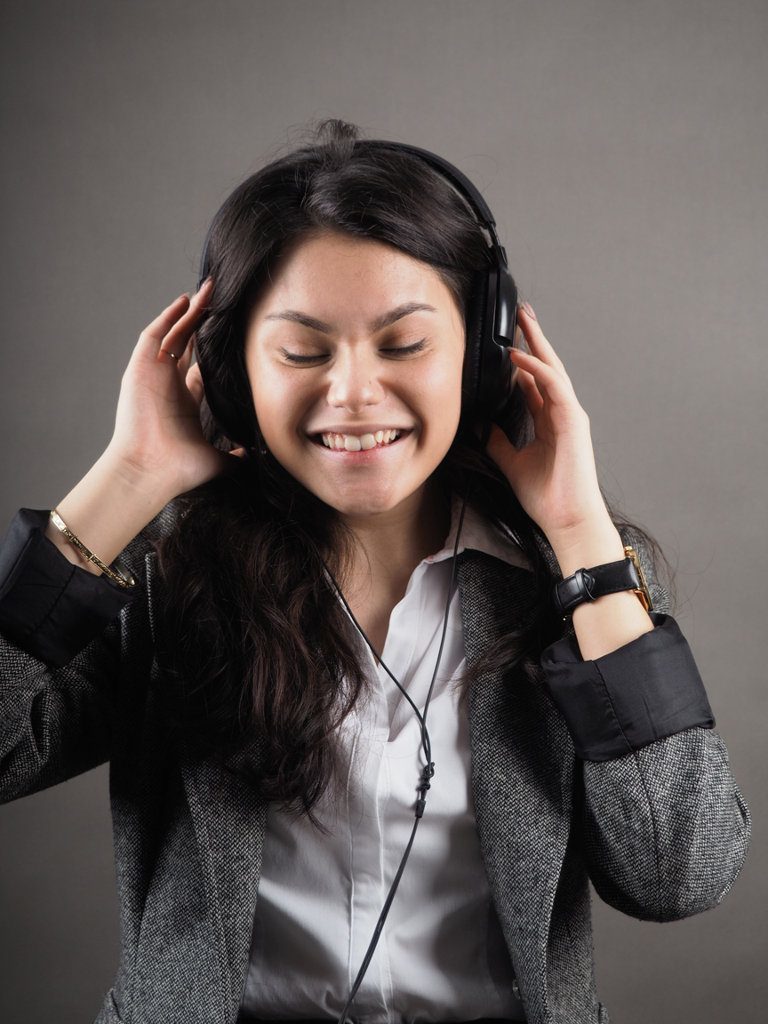
Street portraiture
In this scenario you are still shooting people, but you are not in control of lighting. On the street you face constraints such as weather, time of day, buildings, obstructions and other such factors.
To really push yourself, try shooting at night in winter in dark areas to push the limits of your camera, lens and skill. During 2016 in the winter months, Tobias kindly posed for a few late night shots. The gear used was:
- Olympus EM10 camera
- 50mm f1.7 manual focus lens
- £10 Pentax k mount lens adapter
This setup is rather modest, as the Olympus is a bottom of the range mirrorless camera. The lens is from the Olympus om10 film camera and an adapter from eBay! The one interesting element here is that mirrorless cameras offer “peak focusing” facility which is useful in low light conditions.
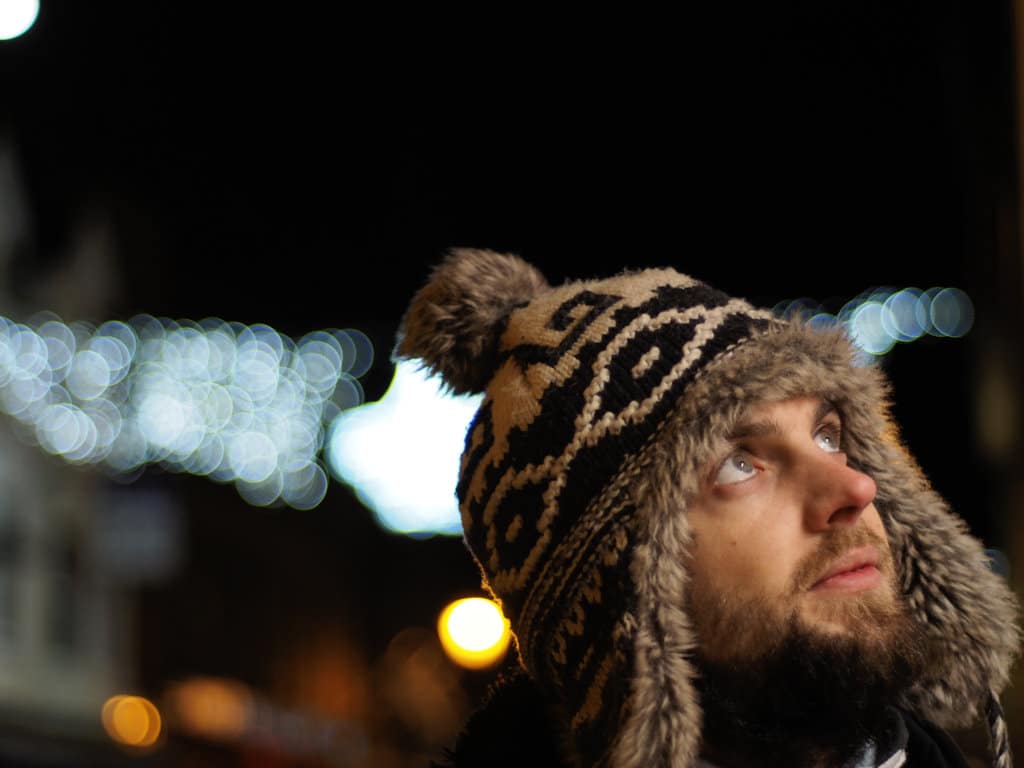
As you can see from the picture (unedited), the image is very sharp and still offers lovely bokeh. For those techies out there, it was:
- manual focus
- handheld (1/100th)
- iso 1000
- pattern metering
Despite the age of the lens (Pentax smc) and low price point of the camera the end product is stunning. This a true example of budget equipment can still deliver great results. Could you say a more expensive camera or lens will produce a better result?
Let us now flip that argument, a full frame camera would handle the low light better (enabling you to lower the iso). This would help you improve the depth of field or shutter speed. Because you have autofocus, the camera would focus quicker. This will enable you to achieve the shot without pressing the shutter too many times. So it could help you be faster and more consistent.
If you consider the Olympus and old lens example, the cost is approximately £260. For me to move to full frame, it is likely to be a minimum of £1100 for a similar lens and camera.
If you are a professional photographer or earn from your work, you have to consider consistency. Would you want to make do with manual focus and cheap adapters that may fail?
3 – Does the lens matter?
So far most of the article has discussed lighting, camera and lens. But in all honesty, the lens is the one of the most important factors. The article will not be going in to scientific testing methods to prove this. The work is not about a technical or precise controlled test, it is a common sense approach.
In the example below Robert Scatliffe used an older and low-end camera (Nikon d3100). In this shot, Robert used the beautiful 85mm f1.8 lens from Nikon. If you look at portraiture and wedding photography you will see this lens used a lot.
Robert’s image proved it was the lens that was important after all. The camera had a good enough ability to capture the image. But the lens took this picture from an average shot to a very high-quality one.
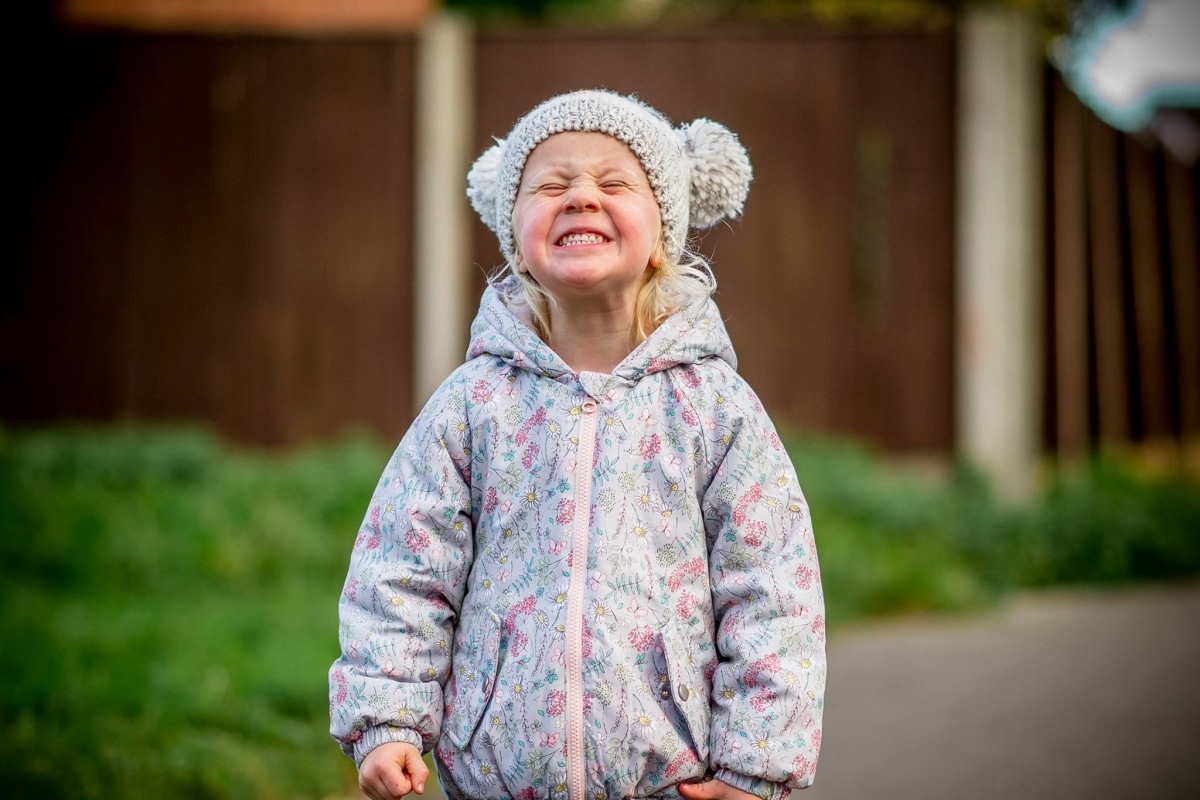
4. Invest in older gear vs modern?
You always have to consider the ability of the camera as well as the lens. But age is not always so important with lenses. Old lenses from the film age were of high-quality glass, but maybe manual focus. If you check the benchmark sites you would see the modern lenses come out on top for picture quality. But my suspicion the quality difference is marginal and a huge jump in cost?
The other element in the age of the camera is the sensor. As this can make a huge difference with digital cameras. In this section we will look at 2 Nikon cameras, but built 10 years apart to compare. We have seen examples in good lighting, so now let us consider low light.
John Ashforth took this on the same night and only seconds apart from the photo by myself. Notice the colours still look real and captured a nice reflection showing detail.
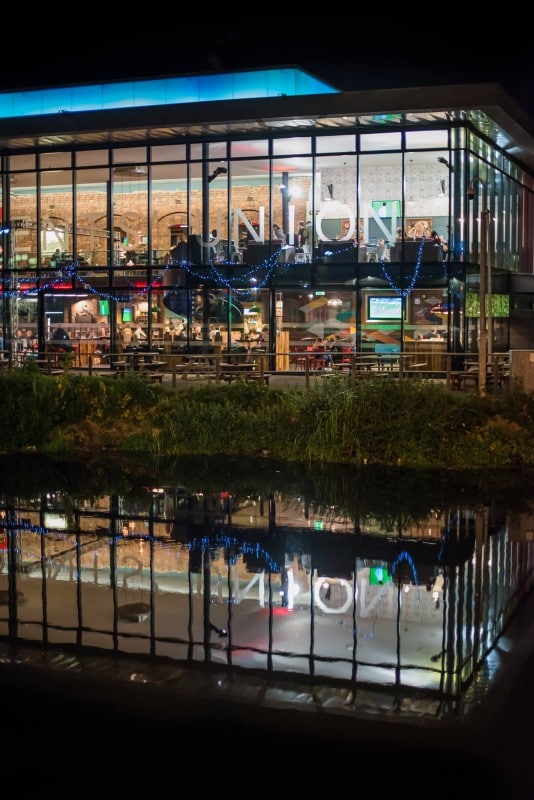
Now consider this example taken by the phlogger.
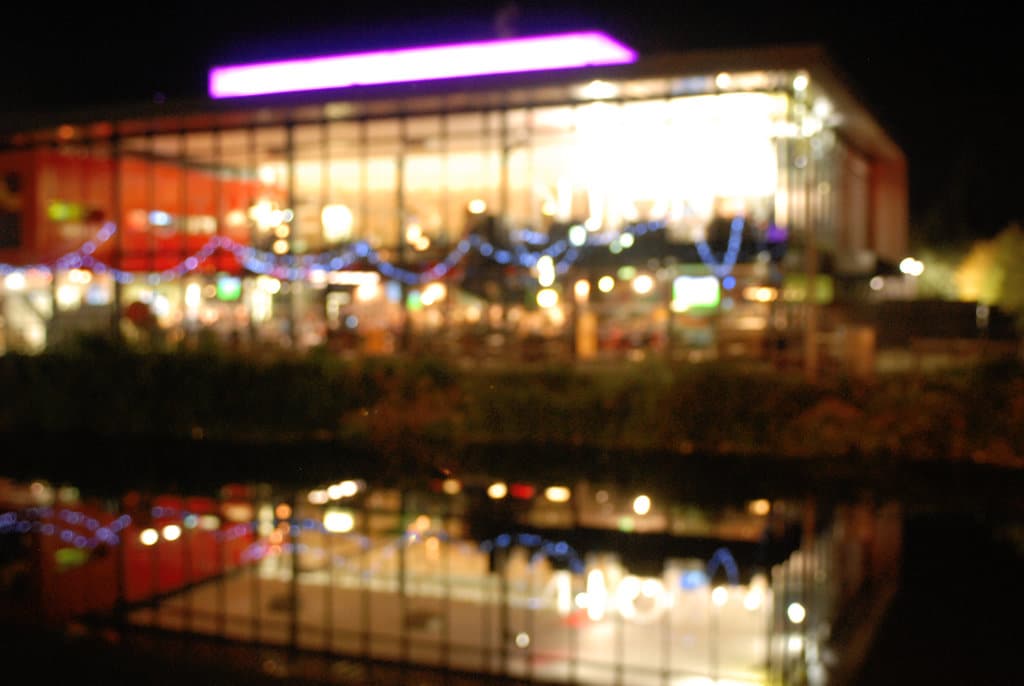
The picture by John is clearly the most useful and better picture, which was taken on modern equipment and a low light lens. But let us consider the data here for comparison’s sake:
John
Nikon d750 camera (launched 2014)
24 megapixels
50 mm f1.4 lens
50mm focal length
Iso 3200
1/100th
Phlogger equipment
10 megapixels
28-70mm pro lens f2.8
44mm focal equivalent
Iso 800
1/3 second
Looking at the figures it is clear why the shot by the Phlogger is poor. The poor sensor and shooting handheld at 1/3 of a second causes too much camera movement. But more importantly, you can see defects in the image (chromatic aberration). Look closely at the light at the top of the picture and you can see the purple haze around the border.
This wasn’t quite a fair fight as John’s lens was f1.4 versus f2.8 (1-2 stops), but interestingly which lens costs more? The f2.8, because it’s a pro level lens and still costs hundreds of pounds even today.
This picture proves without a doubt you cannot match the quality of modern DSLR cameras, even if you dismiss the lens. Of course, it is unfair to think an old d200 could compete. Given a d200 is worth approximately £80 compared to £700 for a used Nikon d750. The gap between the cameras is simply outstanding with low light capability. For a more detailed comparison check out this link.
5 – Buy new DSLR but old lens?
So after reading the above advice and work, are we concluding the lens is important and old glass is the right choice? That you definitely need a new camera? It’s all getting a bit confusing? Where am I going with this argument and advice?
Let me throw another spanner in to the works!
Using the Nikon d200 example and the pro lens used in the previous example, do you think you can still achieve good results? You want to say no straight away don’t you! As the image at night was very poor quality.
Now consider a model and studio session scenario, which is very common to photographers. What is the advice and recommendation for equipment here?
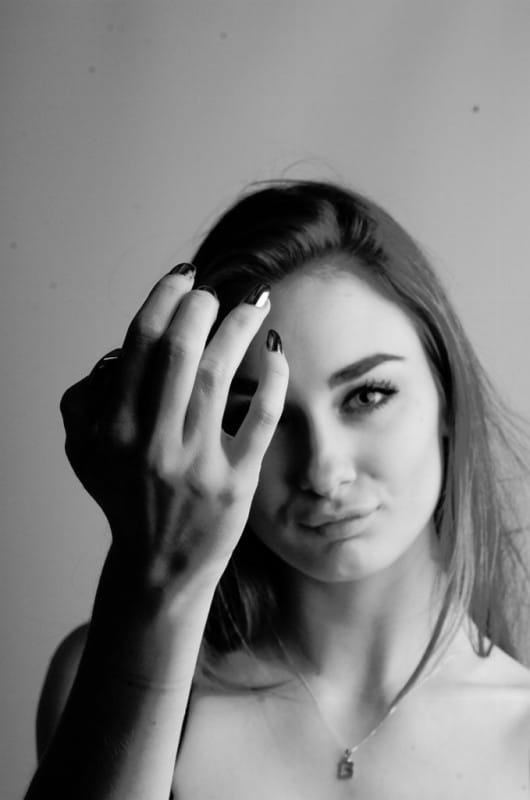
In the above shot, the d200 and 28-70mm lens were used again for great effect.
This camera with the correct light can produce fantastic quality results. During the model shoot many other photographers have a range of cameras from a Nikon d7000 to Olympus Om1 and Canon alternatives too. All photographers despite produced fantastic quality images, because the camera equipment was not as important. The quality was down to lighting, camera, lens, the photographer and the model (all played a part).
If you looked at any of other photographer’s works, you will not see a massive difference in image quality. Of course, some photographers used better poses with the models and can edit better. However, the end product is more subjective.
If you look the shot of Alicia you can see the dust spots near the top of frame. This is an old well used camera and the sensor needs a professional clean (even worse at smaller apertures).
6 – Will the gear improve your work?
Photography is mainly artistic than a practical based occupation. So in theory gear will never improve your work. However, you have to remember there is a lot of psychology in photography too. So maybe having that new lump of glass or sensor may motivate you.
Some of you will be upgrading to help you take the shot that is impossible with current equipment. Situations like this are real, perhaps you shoot something moving like birds or motor cars which may need a tele-photo zoom. High quality lenses for these situations are very expensive.
There will be wedding photographers who have to consider the poor lighting in church venues. Having a camera that has the ability to push the ISO is going to help you deliver quality results.
But there is no substitute for practise and education, ultimately these will improve your work. Remember, it’s the picture that draws you in, not the equipment the photographer used.
7 – How do you know when to upgrade?
This section is not about timing for black friday sales! It is about knowing why you want to upgrade. Have you really out grown your camera?
If you have at the point where there is a clear shortfall in your work, then that is your sign. Have you thought about ways around your problems? What about training or seeking advice from others in the industry. For example for street photography at night I do not own a suitable lens. The largest aperture on my lenses are f2.8, which is too small (these are manual focus too). So in theory if a modern f1.4 or f1.8 was purchased costing £200 this will really aid my work. However, this is not financially viable so the only option is to compromise on the ISO.
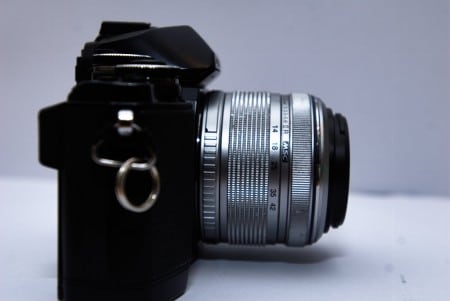
There are some great resources online and one of these suggested you should be able to work your camera blindfolded. The reason for this is you will know your camera so well, upgrading may set you back again. Allow some time to bed in the new camera and learn its quirks.
8 – Where are you going to buy from?
That might sound like a stupid question, but it is not. There are so many options now we have such good online retailers. There are many non specialist companies like Amazon and Curry’s that sell cameras. However, they will not have the experience that may help you.
The camera specialist shops like London Camera Exchange may be more useful to ask advice (often real photographers too).
But the main reason to think carefully, you need to try the camera, hold it and ensure you like it. Button positions and layout on the camera are so important.
Working between micro 4/3, crop, 35mm and medium format size is nothing but confusing for me. The hardest camera is the smallest, due to a lack of buttons and having to use menus. But this is a real example of why it matters to try first. You cannot try a camera virtually, you need to touch it.
Other options are auctions like eBay and the second-hand market (Gumtree is one example). All of these carry some doubt of honesty from the person selling, as their goal is to achieve the highest price.
There are many reputable retailers now in the second-hand market, examples like mpb.com and ffordes.com. Not only do they sell, but they have many choices too. Companies like Ffordes offer advice too and interact over email.
The safest option is to ask a friend for a trial if possible, rent if it’s a large purchase. Otherwise, buy from somewhere that offers a warranty. In my article about the best street photography camera you will hear me talk about this in more detail (link here).
CONCLUSION
To summarise gear is important, anyone who says different is talking rubbish.
If you consider all the images in this article, many were taken with the Nikon d200. Despite this costing under £100 (used), the camera is very high quality. It’s durable, fast, weather sealed and well made. But, as you can see from my words about low light, it is useless and very inferior to a modern equivalent. .
On the street the auto-focus on the Nikon lens was terrible and often had to switch to manual. Another common issue with old equipment is wear and tear. Realistically how long will it last, if it’s already 13 years old?
The modern mirrorless cameras are so useful for those who already own quality lenses. They provide useful functions that can really assist you (focus peaking and zoom). But they are not a low-cost solution, you still need to invest in the appropriate model.
What this article is trying to provide is there is no clear picture here. You can get good results with any camera and equipment, but it will cost you time and effort. If speed, ease and ability to be consistent is important, then spending money is the only solution.
The more creative photographer will always obtain good results. The photographer who can work lighting well will achieve. Relying on more expensive gear just lowers your bank account and puts more pressure on you to deliver.
The message of this article is:
“DO NOT GET SUCKED IN, BETTER GEAR DOES NOT GUARANTEE BETTER RESULTS. THE PHOTOGRAPHER MAKES THE IMAGE, NOT THE EQUIPMENT”.
